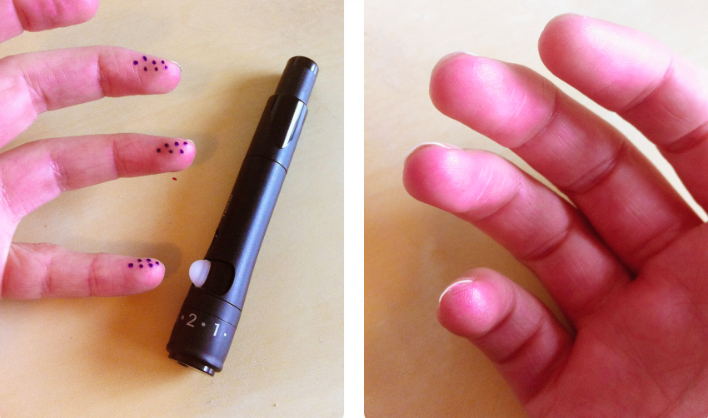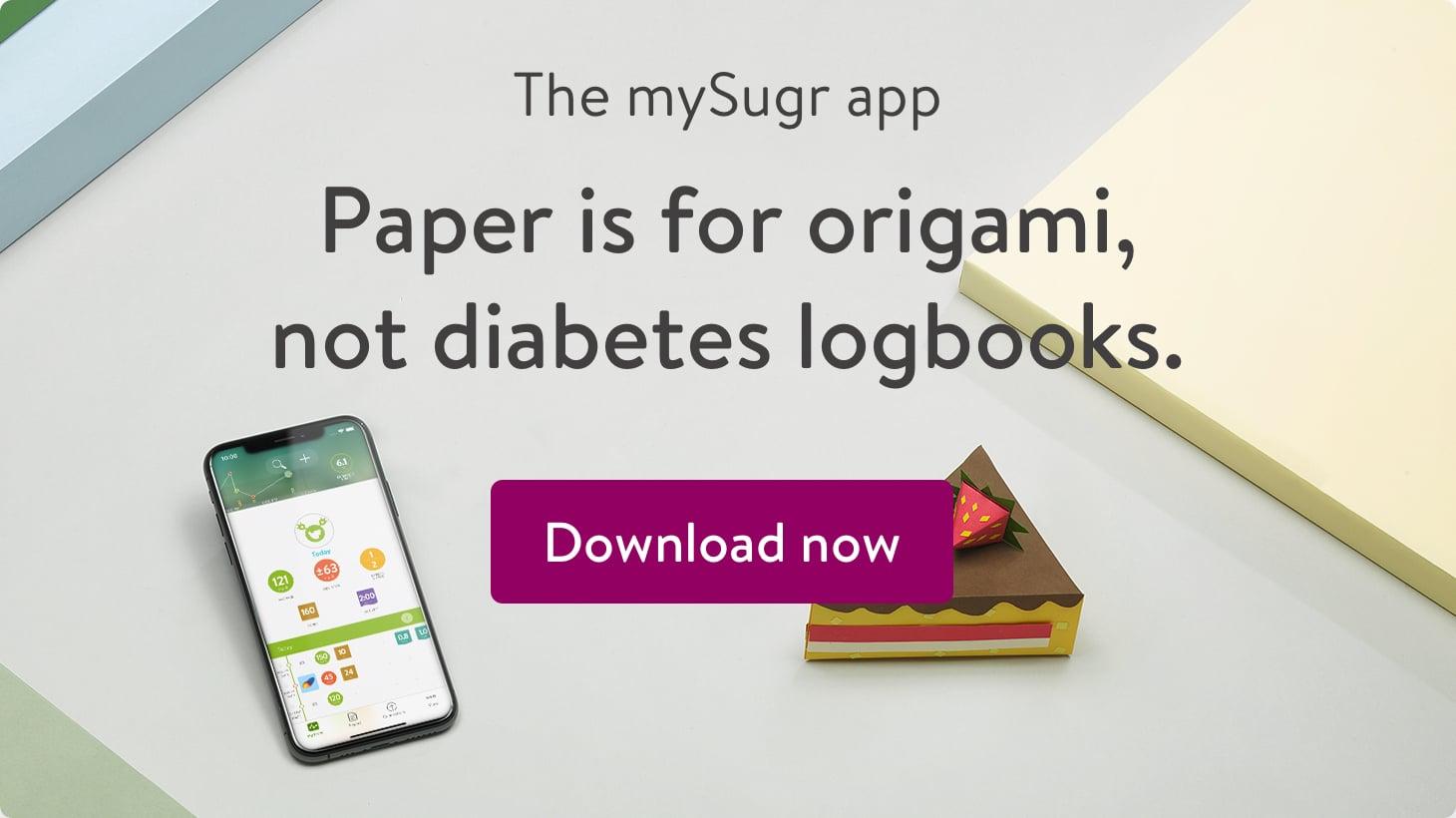Measuring your blood sugar shouldn’t hurt too much. However, many people with diabetes complain about it hurting, or even about an unpleasant and unsightly development of calluses at their fingertips.
But it doesn’t have to be this way if you keep an eye on a couple of things while measuring.
I myself grew up with diabetes. Back then, over 20 years ago, lancing devices resembled rather a guillotine. Or a steel lancet got simply rammed into your finger. How deep the needle or lancet went in was truly a crapshoot. Ouch! When I take a close look at my fingers these days, I have to admit: all is well! No calluses, no “bullet holes“. Neither incrusted nor pricked all over or reddened.
Unfortunately, these days patients rarely receive training on how to best measure their blood sugar levels, when it could be such an easy-peasy thing to do. You really just have to consider a few things:
1. The Lancing Device Nowadays’ lancing devices all work the same way in principle: Almost every device offers the function of adjusting the depth of the needle pricking your finger. However, make sure to start with a light setting and work your way towards the correct penetration depth.
The smallest number on the scale is the setting with the lowest penetration depth. There are also special devices/products on the market that are specifically designed to hurt less e.g. with different or using depth settings or using vacuum and depth control to restrict the lancet from hitting any nerve endings, thus eliminating any pain.
2. WHERE you place your lancing device Let me tell you a secret: after all, there’s no hocus-pocus to it. Use the SIDE of your finger for finger pricking! Never use the center of your finger. If you place the lancing device on the side of your finger, you’ll feel that poke much less than if you use the center of your finger. That’s because there are fewer nerve endings in that part than in the middle of your fingertip. Simple trick, right?
3. Rotation It can be super easy to fall into a pattern of testing in the same spot over and over. However, rotating spots is key to avoid those pesky callouses! Also, did you know you can test on more places than just your fingertips? Many people choose to test on their forearms or palms as well. Having more options can definitely help to rotate spots more consistently. HOWEVER, it is important to have all the information before switching to new testing sites, click here for some more information.
By the way: make sure to avoid pricking thumbs and index fingers as they are most commonly used to touch and feel. And while you’re at it, know that it won’t hurt to have your fingers checked out by a doctor on a regular basis.
4. Changing your lancet When people say “did you change your lancet recently?” they are not just asking this for no reason. Changing your lancet regularly can actually drastically decrease the amount of pain you feel when pricking yourself. The lancets become dull very quickly and trying to collect a sample with a dull lancet is like trying to cut vegetables with a butter knife, painful and more difficult than it needs to be!
5. Warming up your hands Have you ever tried to test your blood while your hands were cold? It is usually much more difficult to collect a sample and more painful as well. Try to warm up your hands by rubbing them together, running them under hot water or sitting on them for a few minutes, it could make all the difference! Do you have any other tips in stock which might help fellow people with diabetes to keep their “velvet paws”? If so, please feel free to post your personal finger pricking tips in the comment section below so we all can keep ourselves in “top-notch condition"!
The mySugr website does not provide medical or legal advice. mySugr blog articles are not scientific articles, but intended for informational purposes only.
Medical or nutritional information on the mySugr website is not intended to replace professional medical advice, diagnosis or treatment. Always consult a physician or health care provider with any questions you may have regarding a medical condition.



